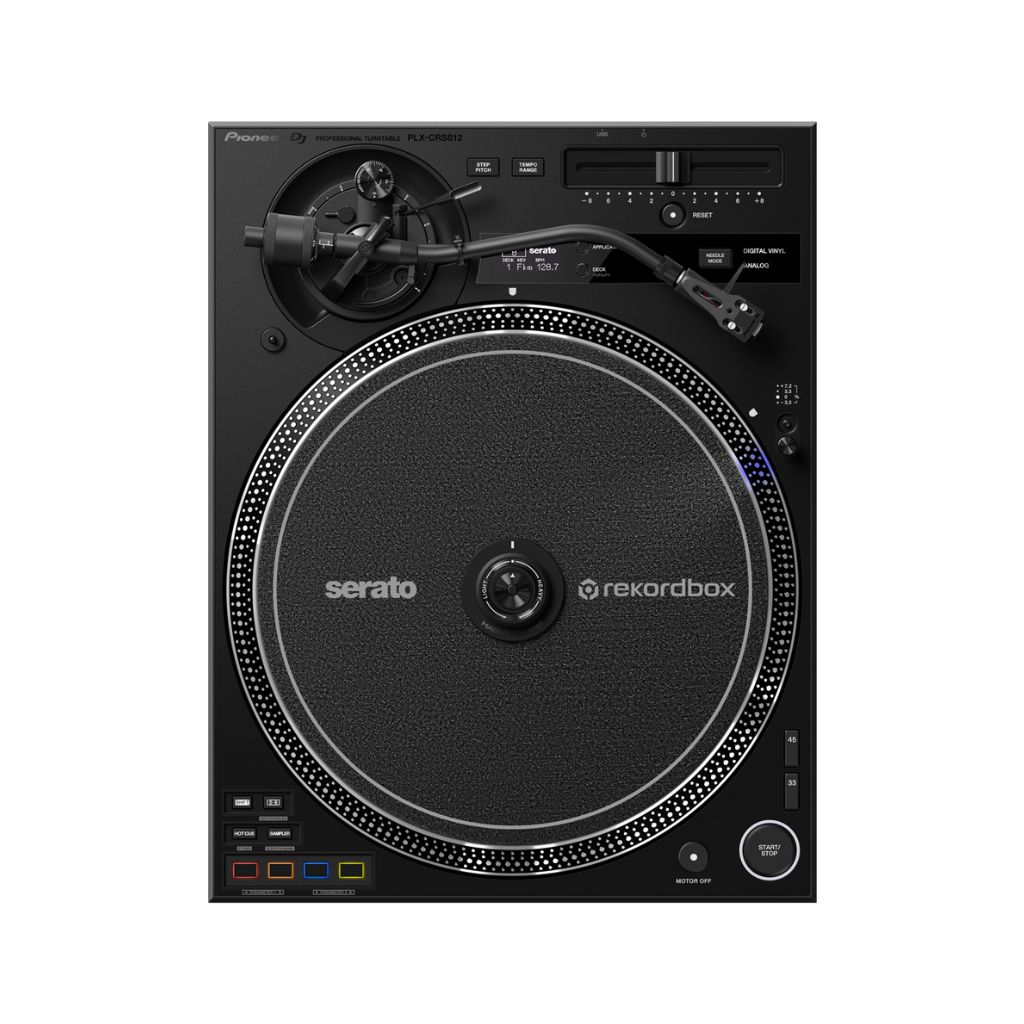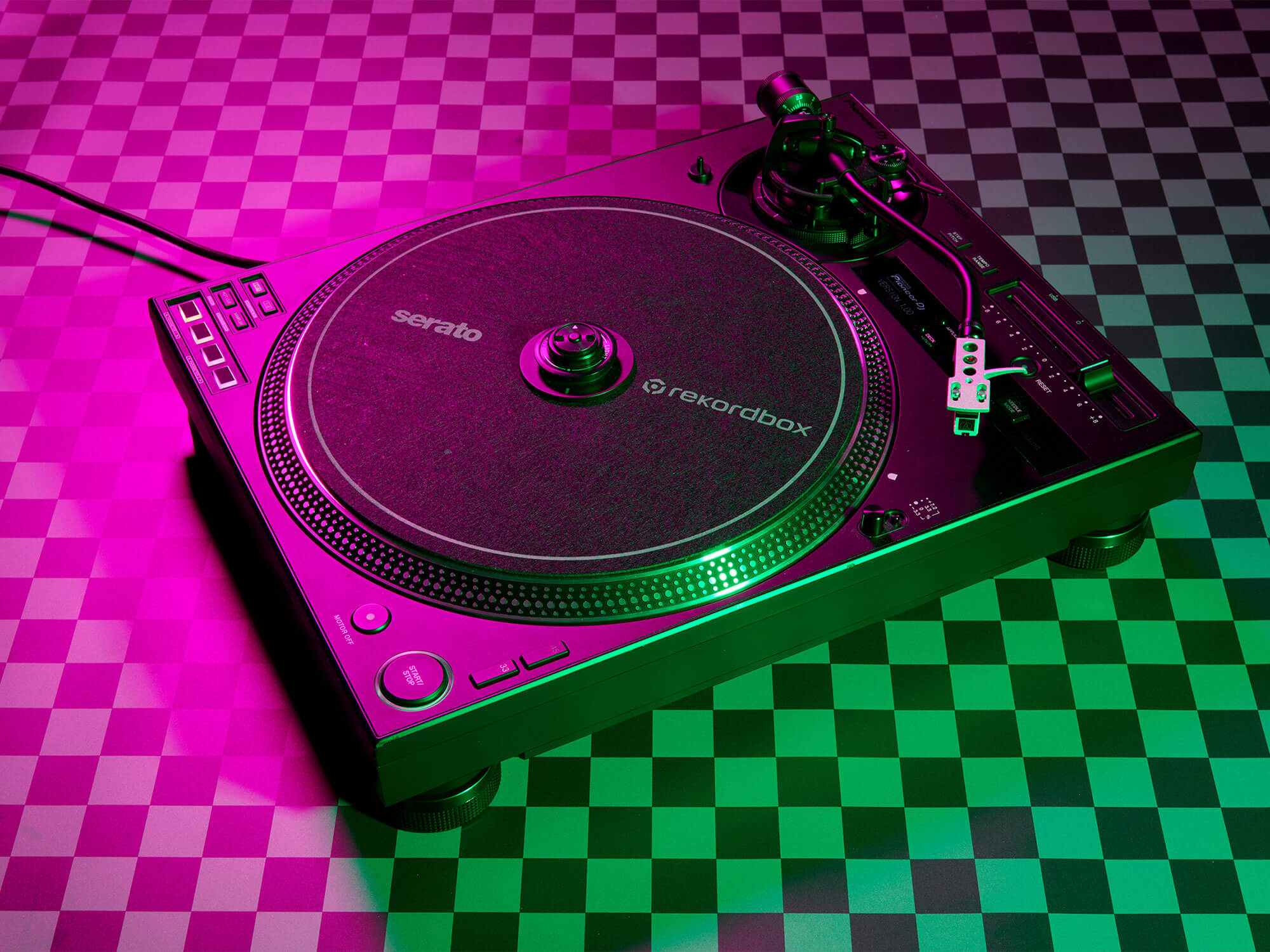
Is Pioneer DJ’s PLX-CRSS12 turntable really a “game-changer” for vinyl and digital DJs?
UK producer/DJ Jon1st and Pioneer DJ’s Jack Canham sit down with MusicTech to share the story and impact of the scene’s hottest new turntable
Image: Simon Vinall for MusicTech
How do you settle the DJ’s perennial debate of vinyl versus CDJ? Digital versus analogue? Purists versus practicalists? Well, Pioneer DJ had the wise idea of creating an all-in-one product to cater to the needs of both camps. Enter Pioneer DJ’s PLX-CRSS12: the world’s first hybrid turntable that’s primed for digital DJs, devout vinyl DJs, and everyone in between.
READ MORE: For the love of sound : How vintage hi-fi sound systems are driving boutique club nights forward
Although CDJs and DJ controllers have become the norm for DJ booths in the past two decades, many DJs will know that there’s sometimes an unspoken prestige given to performers who spin vinyl. Could the CRSS12’s ability to connect to a laptop for digital DJing while allowing you to play vinyl natively open up the floodgates for more record spinners? Or is it just a gimmick that comes at a premium price of £1,199?
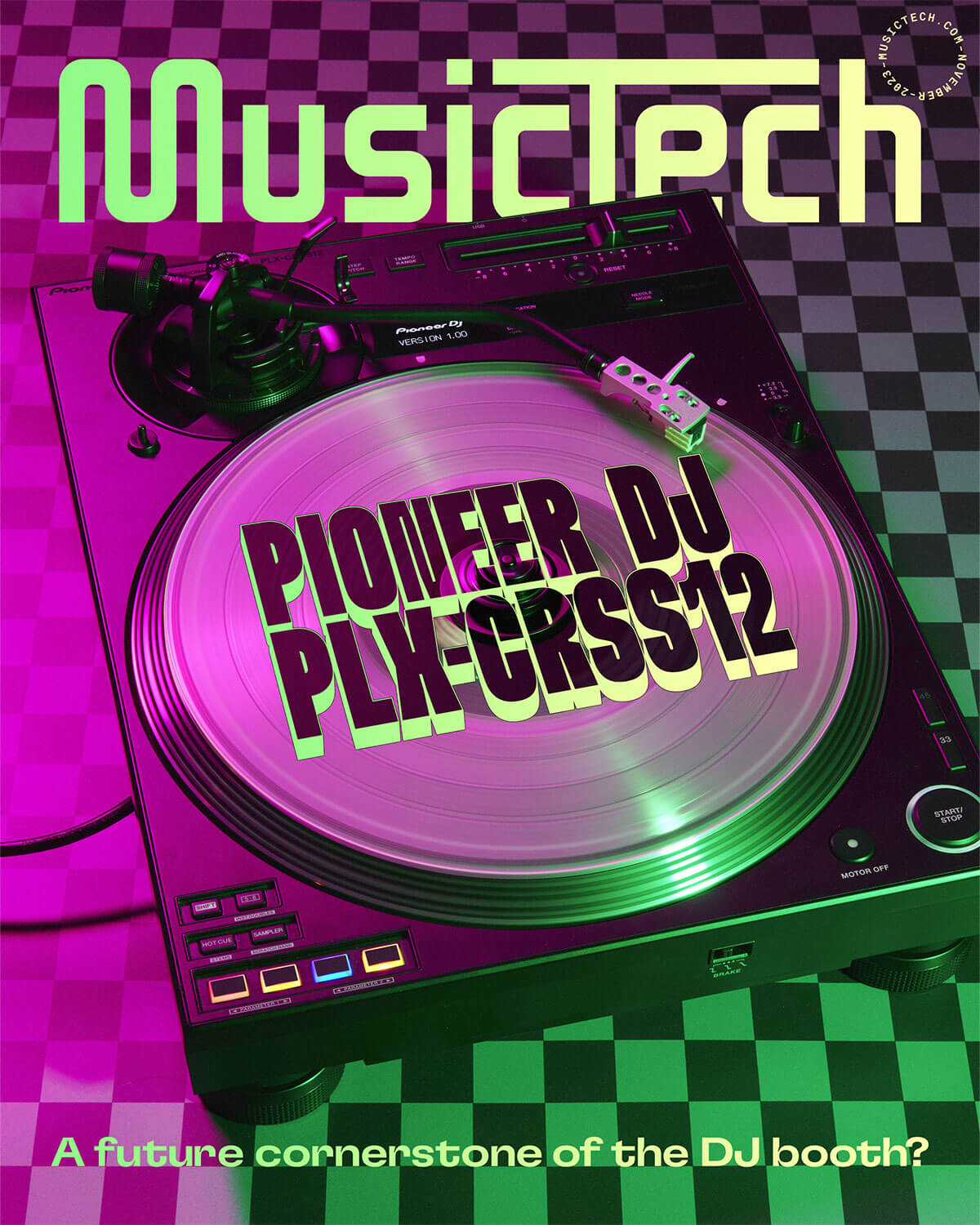
“I love these. They’re really stable decks. They’re everything you want from a physical, traditional turntable,” says UK producer/DJ Jon1st. We’re on a video call, and in the background is a wall of records looking onto two Pioneer DJ PLX-CRSS12s and a DJM-S11. He’s been DJing vinyl and digital for 20 years and, consequently, was invited to be a product tester for the CRSS12s.
The unique turntable has most of the usual features you’d expect from the likes of a Technics SL-1200 or Pioneer DJ’s PLX-1000. It feels immensely premium and robust – and even comes with a hard dust cover – with phono outs, three motor speeds, a tonearm with counterweight, and a pitch slider. Of course, it has a few other tricks to hand, but the point is that anyone who’s used a turntable before should feel right at home with the PLX-CRSS12.
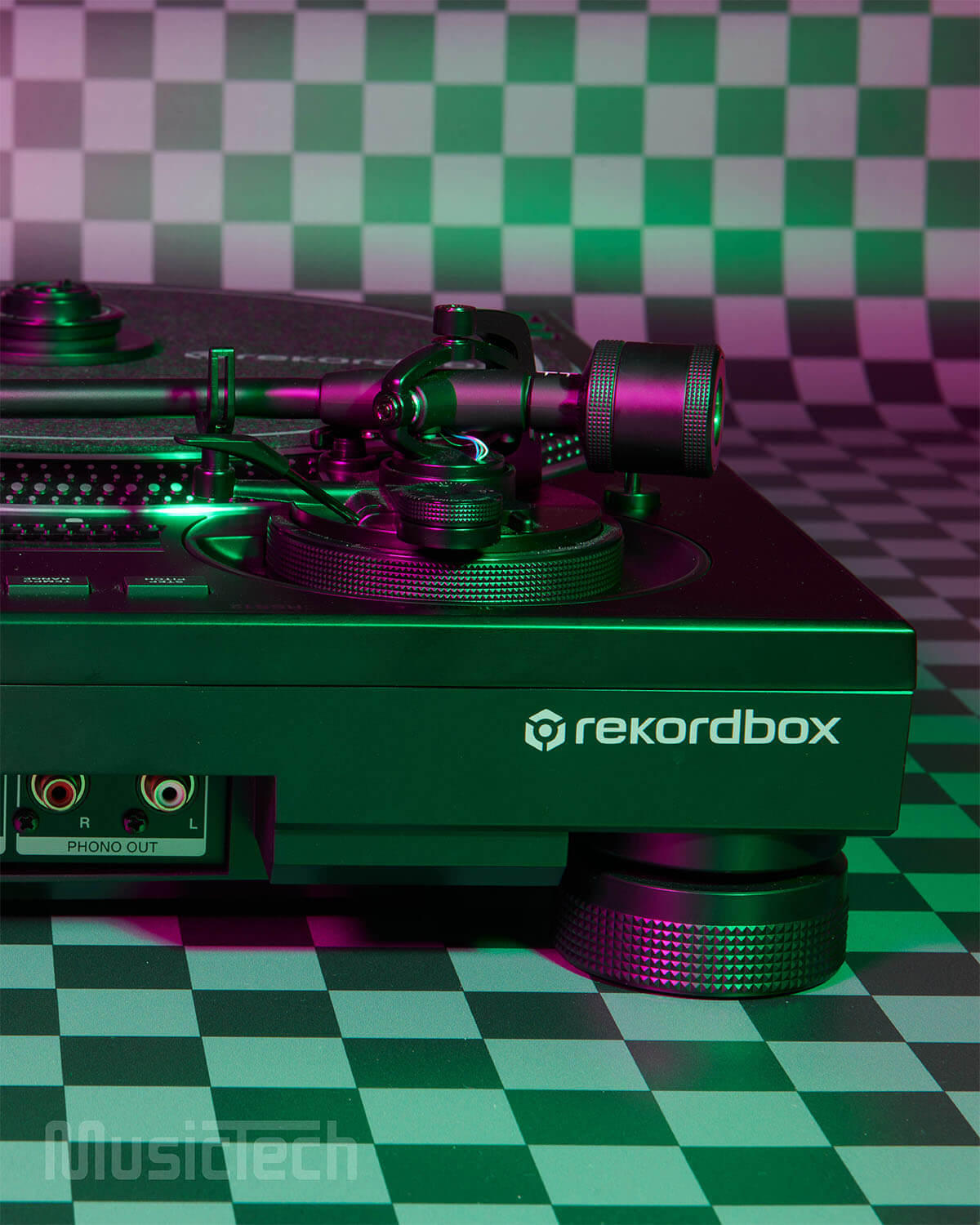
Its modern features include USB-C connectivity to a laptop, four MIDI-mappable performance pads (pre-mapped in Serato and rekordbox to Hot Cues and Sampler functions), a miniature OLED display for feedback on tempo, key, deck and more, and the all-important Magvel clamp. The clamp and spindle are where the magic happens. It’s what allows you to scratch and beatmatch your digital tracks on Serato or rekordbox using the turntable’s platter with any record or flat surface – even a napkin – without the tonearm.
Okay – cool. But why would you want to DJ with a napkin? Or without a tonearm? Digital Vinyl Systems (DVS), such as those made by Serato or Native Instruments Traktor, would require you to purchase a dedicated audio interface and specialised records called timecode vinyl to translate scratching and platter movements onto a digital track on your computer. The CRSS12 doesn’t need that. The turntable will automatically detect any physical movement when the Magvel clamp is attached and will take action on the music playing from Serato or rekordbox on your computer.
It’s a nifty feature but, more importantly, it takes some strain off of your needles and your set won’t get interrupted if there’s any turbulence on your turntable. So if someone happens to nudge your deck while you’re playing, there’ll be no skipping of the needle or rumbling.
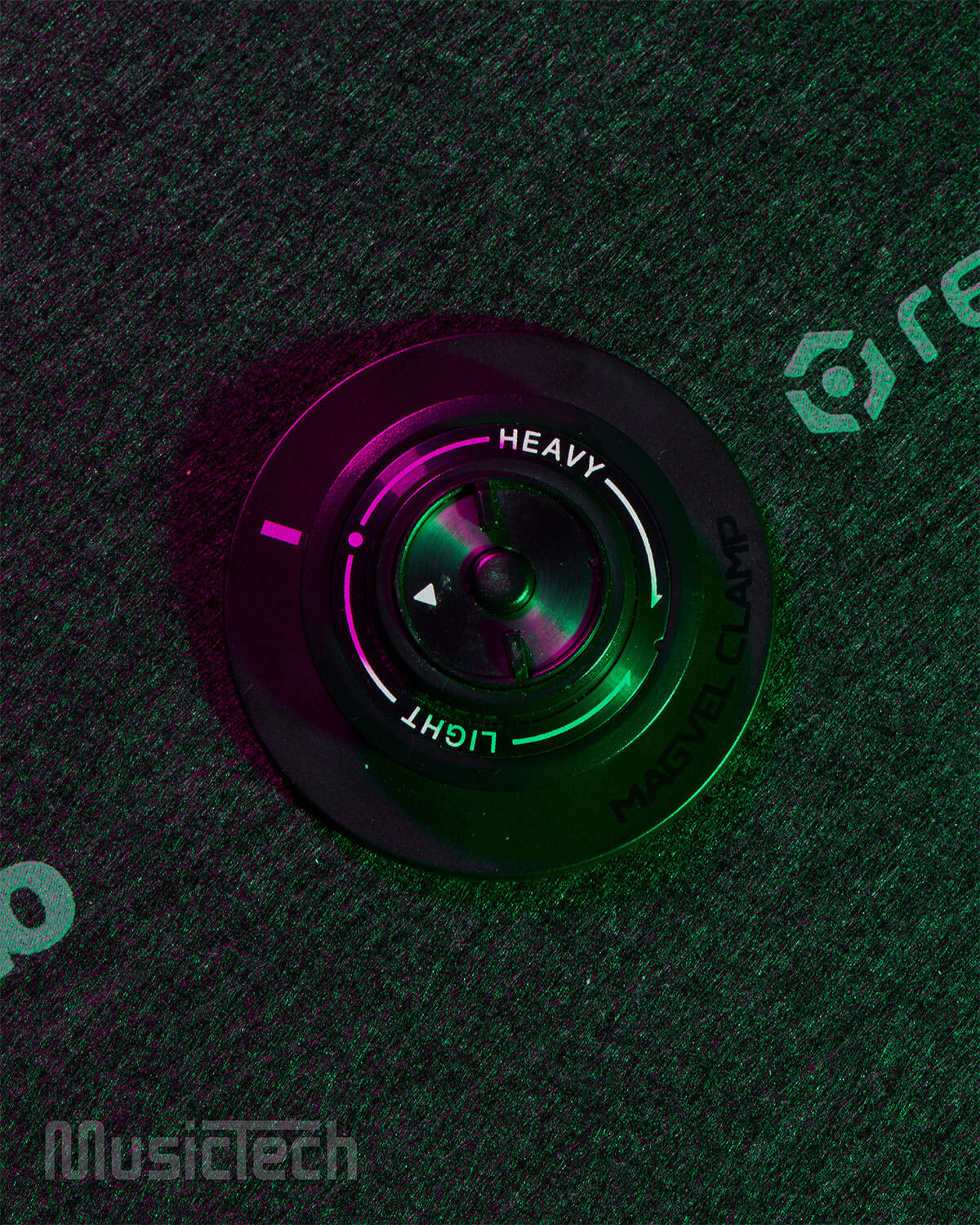
“I have played in venues where there’s high humidity, smoke machines and perhaps not the most stable booths for vinyl turntables, all of which can increase the risk of needles jumping or tracking effectively – and when I was playing more complex live hardware shows where there are a lot of moving parts, that could mean a lot of potential risks for things to fall apart,” Jon1st says. “With needles becoming more expensive – some of the companies that used to make them have retired – there’s been a couple of different products [released]. Phase is what I’ve used for my DJ sets and live shows since 2019 as a replacement for needles because it was more reliable for DVS in those uncertain environments. Plus, replacing needles was becoming expensive and I’d rather keep my needles in good condition for use at home.”
Mixfader, known in the scene as just ‘Phase’, is a cleaner DVS solution for turntablists wanting to connect to Serato and Rekordbox without timecode vinyl. It’s an effective and viable solution, and many artists flock to it, but it’s not a cheap affair if you lose one at a gig. Jon’s pretty happy with the all-in-one alternative in the CRSS12.
“This is everything I loved about [Phase], but in one unit; it’s super reliable. The whole package is clean. Plus, you’ve got all the pads along the bottom, which I find really useful and practical,” he continues. “The new Magvel clamp mechanism, which has the DVS tone on it for Serato and rekordbox is so accurate, and works so well.”
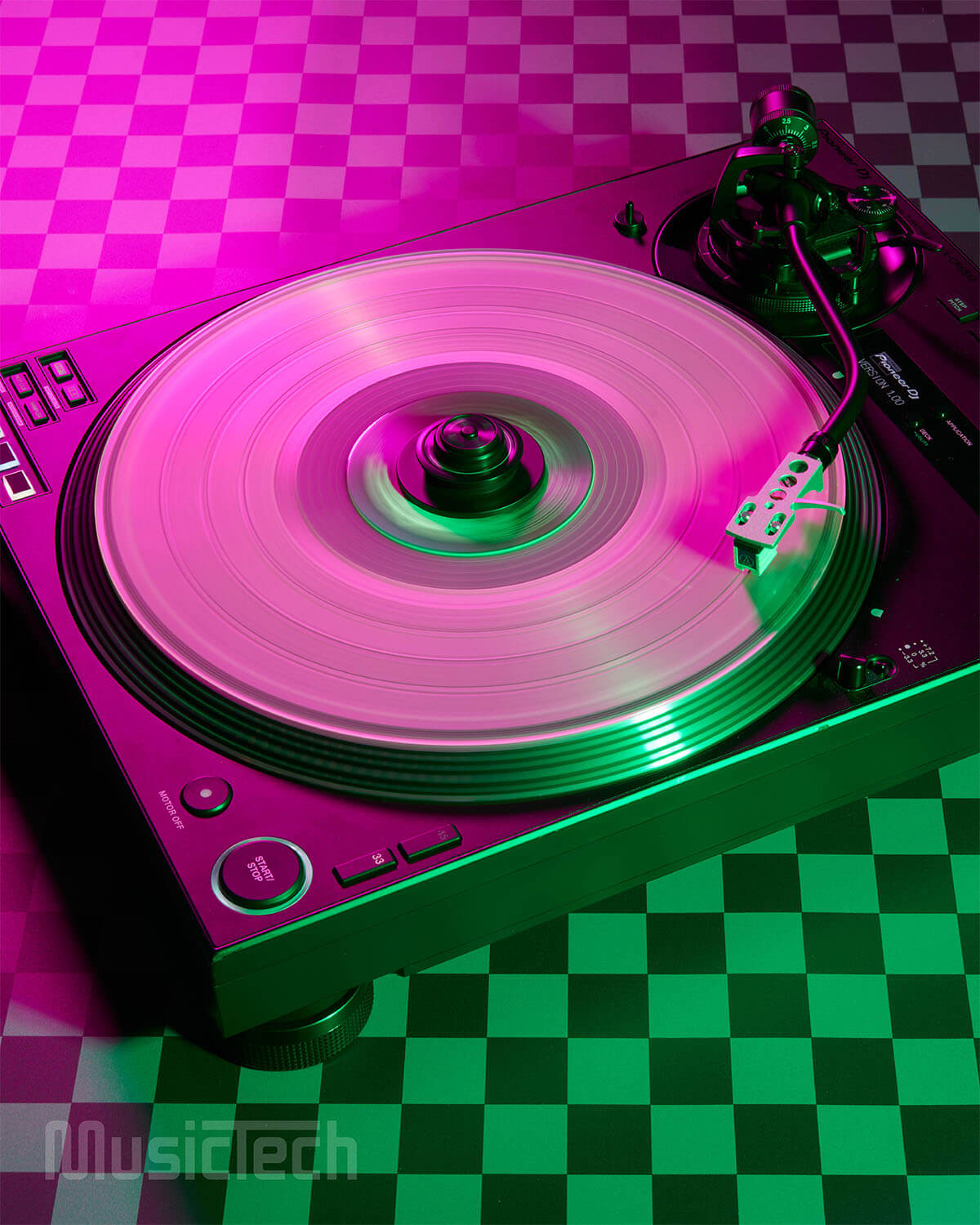
Pioneer DJ’s product planning executive Jack Canham, is proud of the innovation of the Magvel architecture: “This is kind of a breakthrough in our open format side of the DJ community,” he tells MusicTech from the Pioneer offices.
“A lot of DJs before were using the Phase boxes, or they were using the Rane 12s – you know, both good products – but [Rane’s offering] was quite a heavy product to take around and Phase is more of an accessory. So if you go to a venue, you’d have to make sure that their turntable is up to standard for the motors to still work with it, then you have the issues with the battery life – the uncertainty of making sure that your batteries are charged before you went to a gig. So we took those little things into consideration when we were researching that market. And, yeah, the CRSS12 is a hybrid platform for DJs to have an all-in-one system, basically. You’ve got the best of both worlds of using vinyl and using digital with an application such as rekordbox or Serato.”
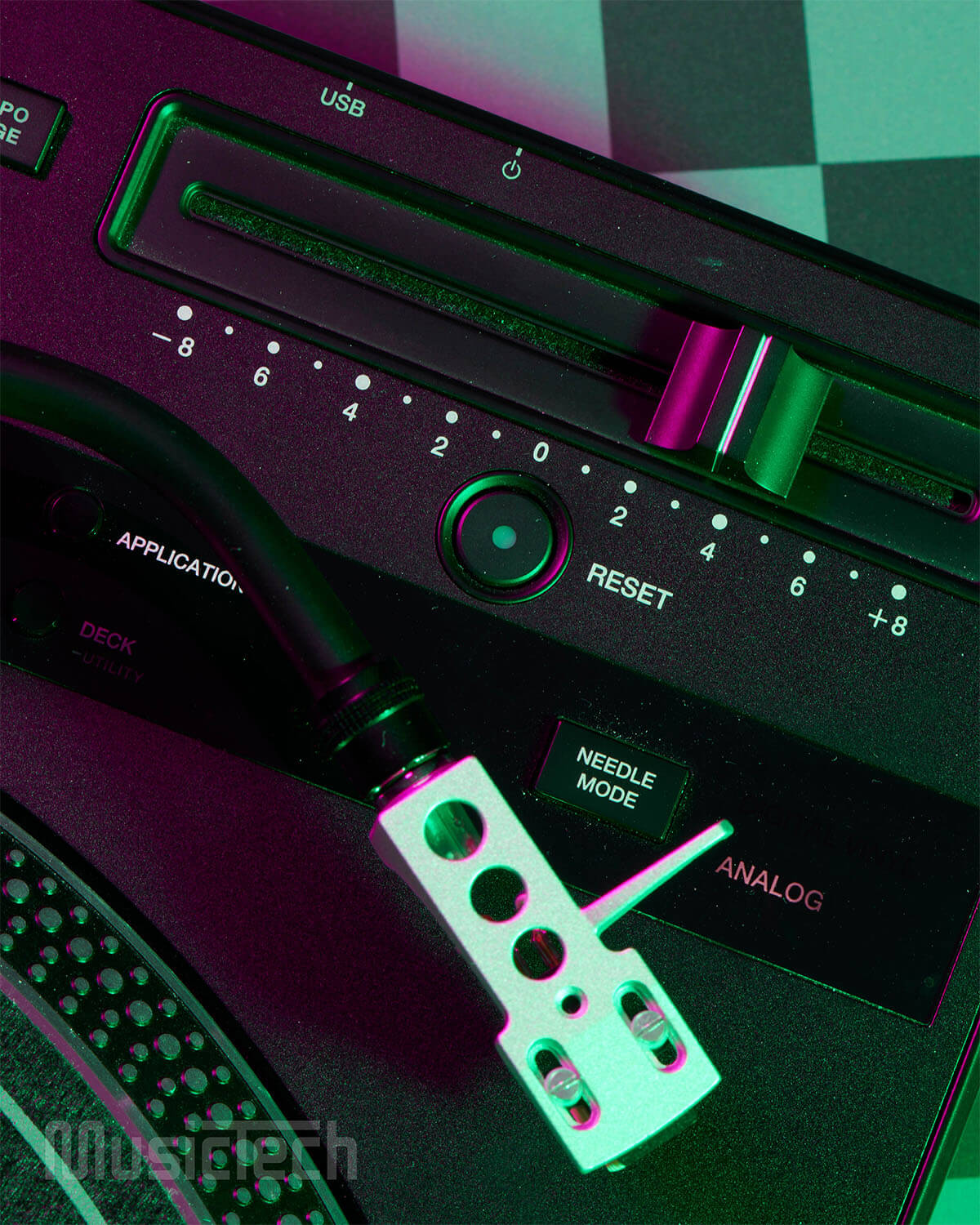
Although you’ll get a lot more versatility with the CRSS12 in comparison to other turntables, Canham stresses that Pioneer’s goal was to maintain a familiar design. That means avoiding creating a turntable with “loads of flashing lights and buttons around the sides” that DJs might accidentally push during a performance. To that end, Canham says that Pioneer did a comprehensive amount of research before jumping into the two-year product development stage. Such research includes “speaking and listening to DJs from the very top tier to more general DJs,” he adds.
As a result, Jon1st says, the CRS122 has a pretty broad target demographic. “You don’t even have to plug in the USB stuff, like, it’s a standalone record player…You can use the Magvel clamp as a traditional clamp as well, to reduce dishing on the record or stop it flying away if you’re playing on a boat party somewhere,” he adds with a chuckle.
“And you’ve got three different pitch range, in case you need that extra bit of push. And for people a bit more adventurous, there’s also a Step Pitch option for the pitch control. So rather than it being a gradual slowdown, it will lock until it reaches a semitone. So there’s no curve, it’ll just drop into the next note. So if you’ve got a locked groove [record], which is in like C, for example, you could go, ‘Okay, I’m gonna go up two notes and I’m in D’. And you’re not going to get like some weird micro tone or something in between, it’s always going to be that you can trust it.”
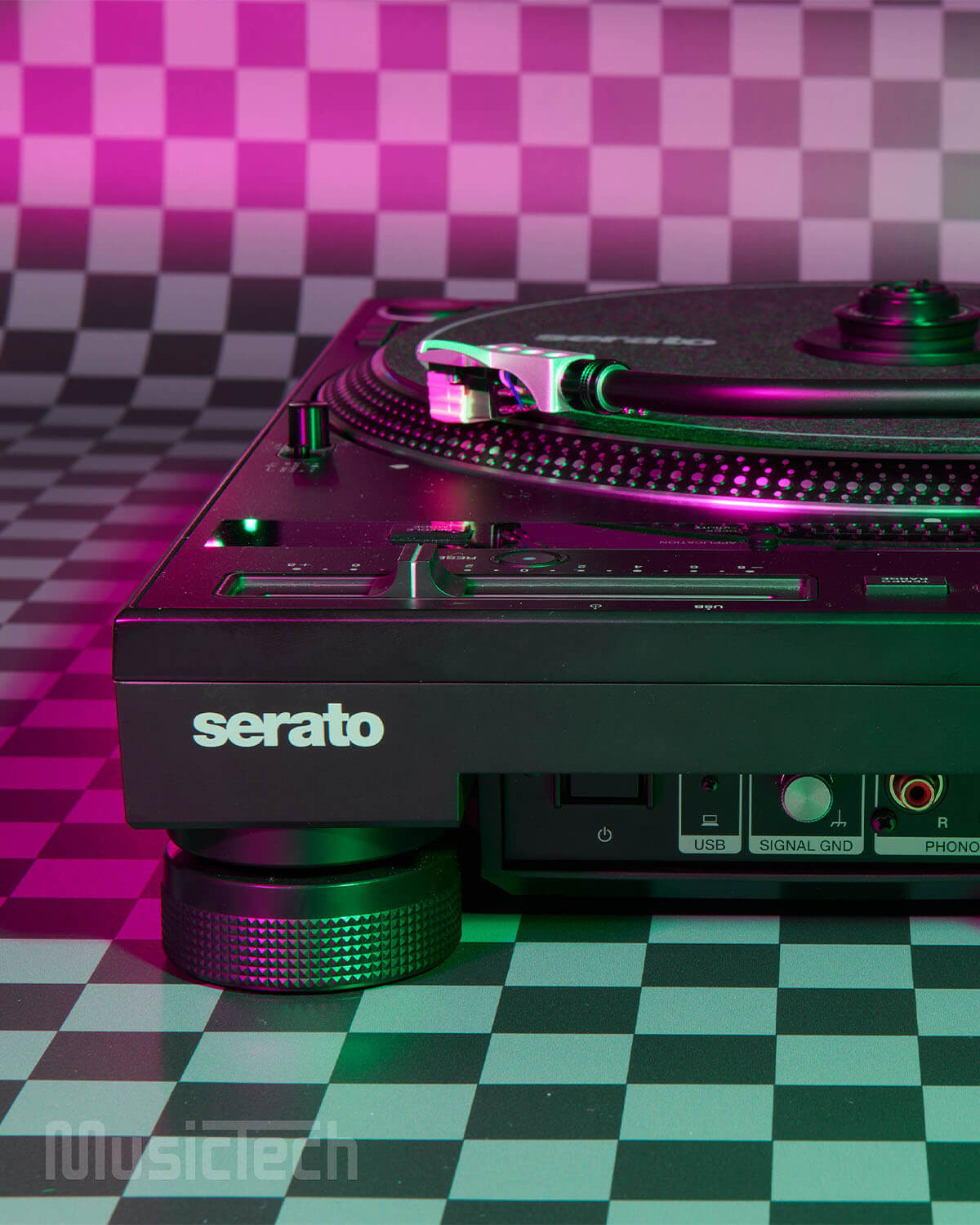
Jon1st has been using the CRSS12 alongside Serato for quite some time now, taking advantage of another recent innovation in the DJ world: stem separation. This isn’t a hardware function but is built into the Serato software. It’s also not exclusive to Serato – VirtualDJ opened the floodgates to stem separation, but with the advent of AI, such features are becoming more commonplace. You can map the stem separation to your mixer or controller but, because of the mappable buttons on the CRSS12, you can quickly deploy it straight from the turntable. It’s not too dissimilar to having a Novation Dice on the corner of your turntable.
“Being able to drop out various elements with stems on the turntable is the big game changer for me,” Jon continues. “Because otherwise, you’d have to do some sort of mapping. And then you lose how many pads you’ve got, or you’d have to have like, another piece of kit that you’ve mapped out. It’s really handy, particularly if you’re just vibing off the crowd and haven’t really rehearsed something, you can make those transition points when you’re DJing really quickly. So like, stripping out the melody or the bass and just having the drums and vocals gives you a lot of combinations for blends and melodic mixing.”
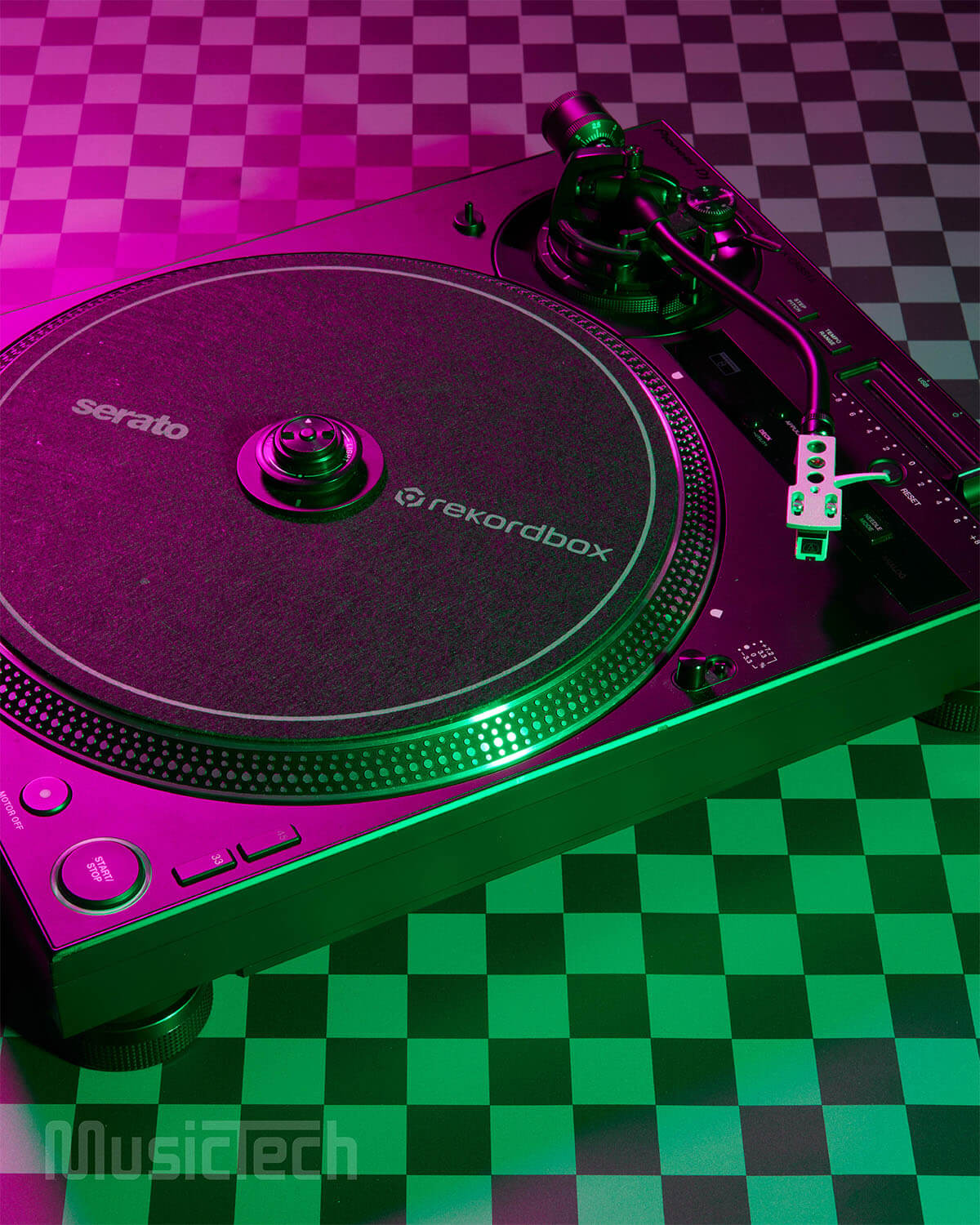
These features and innovations are all well and good, but the elephant in the room is the price tag of the CRSS12. At £1,199 a turntable, these aren’t ending up in bedrooms around the world anytime soon. It’s not too far above the price of a Technics SL-1200, and you’re getting quite a bit more, but the CRSS12 is yet to hold the same prestige and trust as Technics’ flagship.
Canham weighs in and assures that Pioneer “tried to make it as affordable as possible and, at the same time, competitive with the units that are available at the moment. And, you know, it’s an all-in-one unit, so it kind of ticks every box from having to worry about accessories, or replacements or anything like that.”
“We try and make sure that we hit every target market. CDJs are club standard but we release other products that have similar features. Then when DJs go to a club, they feel comfortable, because maybe they’ve used maybe, say, an XDJ-1000 Mark Two or something like that. So there in that ecosystem already, where they kind of know where the jogwheel is, know what the workflow is on the screen. And that’s kind of what we want with our turntables. We wanted to make sure that if you’re used to using a Technics, or used to using a PLX-1000, you’ve got that whole basic layout of a turntable. And, you know, you’ve got cheaper options but this is our industry-standard turntable for open-format [DJing].”
Does that mean that Pioneer DJ is on a mission to shove out Technics from the booth and reign supreme as the ultimate brand for DJs, with its CDJ-3000s and PLX-CRSS12 on the decks? Not exactly, says Canham, but Jon says that “hopefully, in the future, venues can start bringing these in as they’re in-house decks. They’re just great.”
